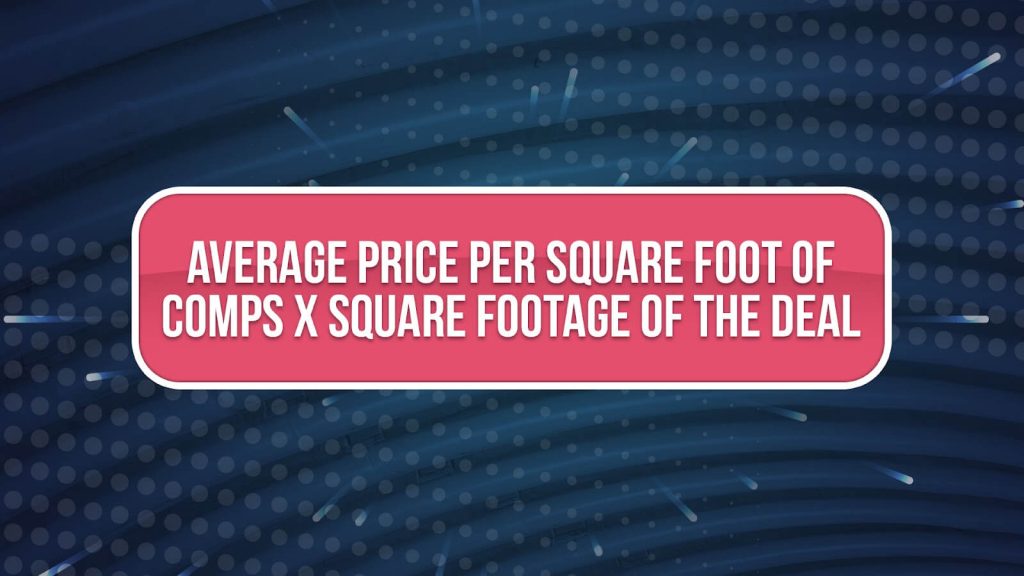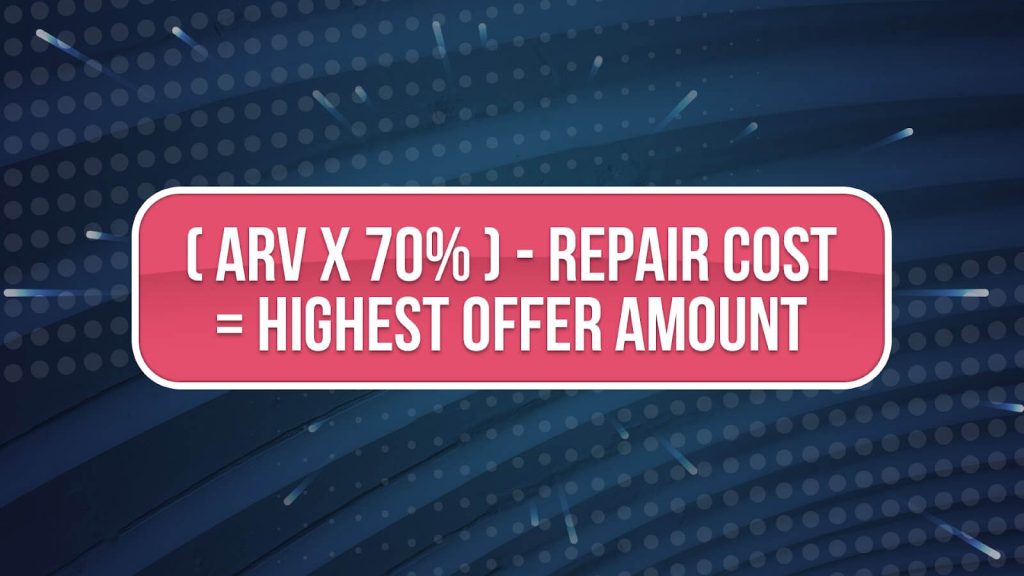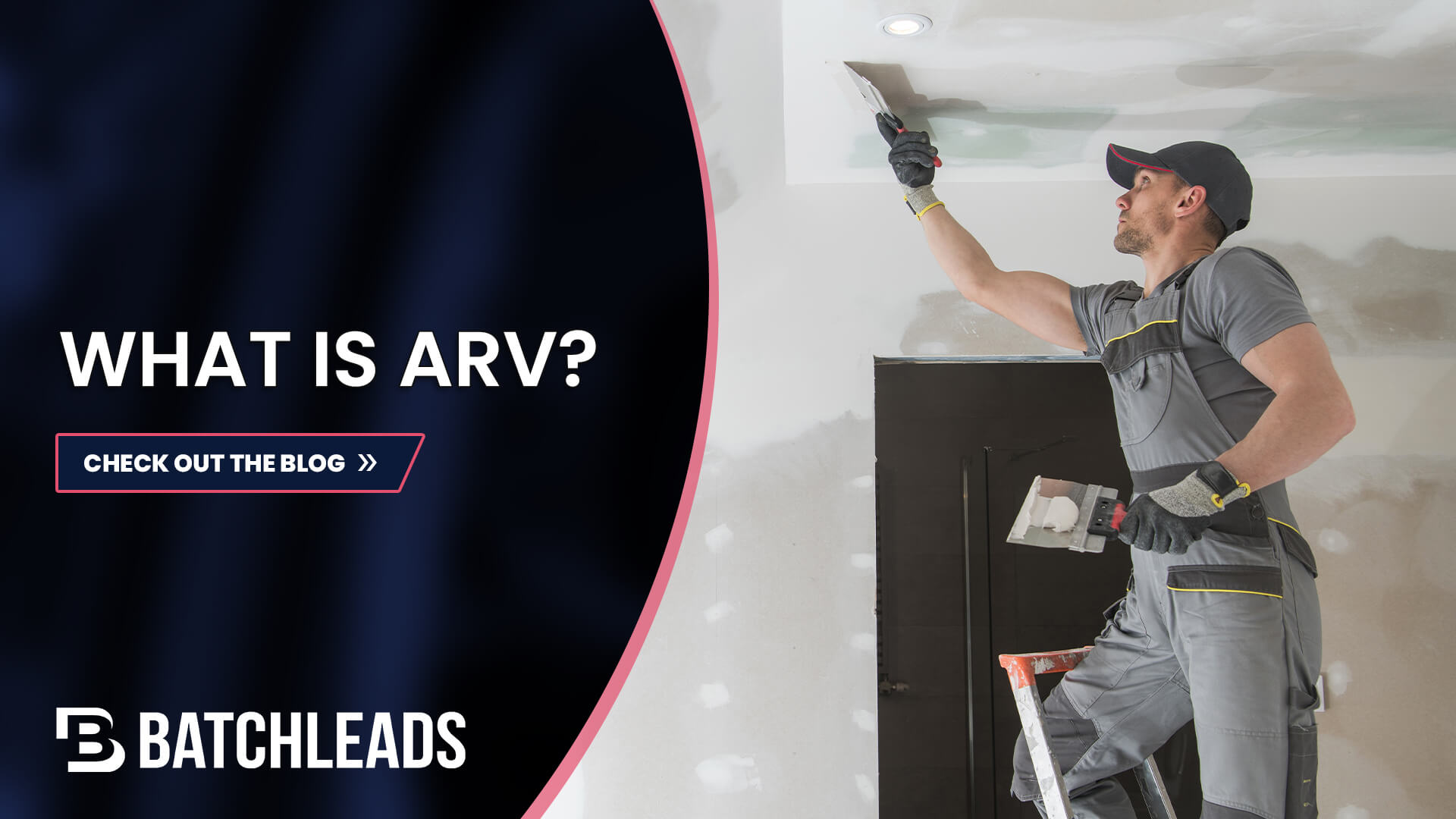eteran real estate investors are true visionaries. When they look at a distressed property, they don’t see the broken windows, knee-high grass, and months or years of neglect. Instead, they see what could be: a thriving rental property, a fixer-upper in an up-and-coming neighborhood, or a great find for a cash buyer.
But how do they see so much potential where everyone else sees a run-down house? It’s simple: they know how to calculate the after repair value and leverage it to uncover all the potential hiding in a property, no matter how unattractive it is on the surface. In this guide, we’re going to show you how to do the same thing.
What is ARV and why does it matter?
ARV is an acronym that stands for after repair value. It tells investors how much a property will be worth after it’s been renovated and repaired. So why is it so important?
First, it helps you establish your maximum purchase price on a house. Until you know what a property is worth, you can only guess what you should pay for it. But once you have a solid estimate, you can confidently make an offer without taking a shot in the dark.
Secondly. because ARV tells you what you can afford to pay for a property, it gives you a built-in negotiation tool. When you’re making offers on distressed properties, not all motivated sellers will agree to your price the first time they hear it. In fact, many of them will feel that it’s far too low.
However, if you have numbers that show what the home is worth in its current state, what it will be worth after repairs, and what it will take to get the house there, you can easily justify your offer.
At the same time, ARV can also help you weed out the deals that aren’t worth pursuing. By estimating what a property will be worth once you put money into it, you can quickly tell whether you’ll make money, break even, or lose money on the deal. And if you can’t get a seller to agree to your price, you’ll know when it’s time to walk away. You’ll never feel like you’re abandoning a promising deal again.
As you can see, after repair value is a great way to find out what a property is worth, but that’s not all it’s good for. It’s also the key to estimating your rental income, since the rental value of a residence is based on how valuable the property is. By multiplying the ARV of the property by 1%, you can quickly estimate its monthly rental potential and figure out if a house is a good fit for your portfolio.
Clearly, knowing a property’s ARV empowers you to buy confidently and go into deals knowing that you’re going to make a profit. So how do you find this crucial number? The good news is that the process is surprisingly simple!
How do you calculate a property’s ARV?
To calculate the ARV of a property, you’ll search for comps (also known as comparable properties), which are recently sold houses within 1-5 miles of your deal. However, a comp isn’t just any house that’s recently sold. Good comps have a few important details in common with the property you want to buy, including similar:
- Lot size and house square footage
- Features and amenities
- Style and appearance
- Location and accessibility
Basically, when you search for comps, you want to find houses that are as similar to the property you’re considering as possible. Once you’ve found several of these homes, you’ll calculate their average sale price per square foot. Then you can use the ARV formula below to calculate the approximate value of the property that you want to buy.

How do you find real estate comps?
Calculating a home’s ARV is a fairly straightforward process, if you can find comparable properties. The problem is that finding recently sold houses that are also similar to your deal on your own is nearly impossible, especially in a busy market. Unless you plan on driving around and keeping a spreadsheet of every for sale sign you come across, you’re going to need help.
One option is to work with a licensed real estate agent to get this information. Agents have access to the Multiple Listing Service (MLS), which is a database of real estate listings and transactions, complete with exact sales prices. Unfortunately, you can’t access this database without a license. Going to an agent every time you want to evaluate a deal isn’t going to work for long, especially if there’s nothing in it for them.
Thankfully, there’s a better answer: a real estate comping tool. A comping tool is a data-fueled platform that automatically shows you comps when you select a property. If you’re using the right tool, it will even include home sales data and calculate ARV for you, which will make comping faster, easier, and more accurate.
Using the comping tool in BatchLeads is incredibly simple. All you have to do is select the property you’re interested in and BatchLeads will do the rest.
How do you use ARV to know if you should invest in a property?
As we’ve discussed, ARV is important because it tells investors how much a property is worth and helps them evaluate their options. But there’s another step involved in finding out just how much you should pay for a property: the 70 percent rule.
The 70 percent rule states that your final offer on a property should never exceed 70% of its ARV. Following this rule can help you maximize your return on investment (ROI) and buy safely so that if any of the following situations occur, you don’t lose money on the deal:
- There are unexpected renovation costs
- You have to hold the house for longer than expected before reselling
- There’s an economic downturn that causes housing prices to fall unexpectedly
You can use the following formula to determine your maximum bidding amount:

Of course, the 70 percent rule isn’t an unbreakable law that you should always live by. There are times when you should disregard it to maximize your profits, but understanding the following principle is very important.
Almost all investment properties will require some amount of work and holding time. You should never get so excited about an opportunity that you buy it at or too close to its after repair value.
What factors affect a property’s value?
Now that you understand comping and how you can use it to evaluate deals, we can dive deeper into the factors that drive a property’s value up or down. In general, the condition of the property and the state of the local real estate market are going to have the biggest impact on what a property is worth. However, there are usually a number of other factors at play.
The most basic is the state of the economy, both nationally and locally. If a lot of people are making real estate purchases, then a house will be worth more because there’s high demand. But if a lot of people are listing their homes, then property prices will generally fall since there’s more supply. 2022 showed us all a unique exception, but home values will generally follow the law of supply and demand.
Something else that can affect a property’s value is the style of the house and which styles are popular in your market. For example, if you’re considering a ranch-style house in an area where they’ve fallen out of fashion, expect a lower ARV. But if two-story colonials are popular in your market, expect them to have a much higher ARV. You should also consider what’s growing in popularity. If you can buy that type of house before it becomes in vogue, you may be able to buy at a low price and sell or rent at a premium.
Location will also affect how profitable different kinds of real estate will be. For example, a single family home is almost always going to be more valuable than a townhouse if you’re investing in the suburbs. But in a dense city or a neighborhood near a university, a townhouse or condo might bring you more rental revenue because there’s more demand for short-term living spaces.
Finally, you should consider the future. A property’s ARV today may not reflect its true potential a year from now. Sometimes, properties sell for high prices in dying areas right before their value plummets. In other situations, properties that are cheap today can drastically increase in value with zoning changes and local development.
So before you walk away from a property because the ARV doesn’t match your expectations, take some time to consider hidden ARV factors and look at what’s about to happen in the area. If there are upcoming developments, population shifts, and other large changes on the horizon, you should carefully weigh your options before moving on to the next deal.
How does ARV affect different kinds of investing strategies?
Finally, it’s important to understand the role that ARV plays in different investing strategies because there are many ways to make money without holding a property long-term. If you plan on pursuing short-term options, then understanding how to calculate and leverage ARV may be even more important.
If you’re wholesaling, then you’re looking to make a profit immediately by finding deals for other investors. Knowing a property’s ARV will let you maximize your profit by getting deals under contract as cheaply as possible. Remember, cash buyers often use the 70% rule as well, so a good rule of thumb is that the lower the contract price, the more money you’ll make.
This approach is even more important when you’re flipping, because you’re going to invest your own money in renovation supplies and contractors. The less you pay for a property, the more you’ll make. However, rough estimates won’t cut it. You need precise ARV calculations so you can buy at the right price, avoid losses, and maximize your ROI.
Key takeaways
After repair value is among the most important concepts in real estate investing. It will reveal what a property is worth, help you evaluate your options, give you a preview of your rental income, and even help you avoid overpaying. The best part is that calculating ARV is usually simple. Modern property intelligence and real estate lead generation software have made it an automatic process.
Now that you know the basics of comping and calculating a property’s ARV, you’re ready to dive deeper and learn from a master. Check out our ebook Decoding Real Estate Investing for an exclusive interview with the comping king Jamil Damji. Inside, he gives a detailed explanation of his comping process and some of the essential factors you need to take into account.
If you’re serious about developing this essential real estate skill, you can’t afford to miss his section of the book. And as a bonus, you’ll be treated to exclusive interviews with 15 of the industry’s other top voices. From REI basics to real estate taxes and scaling secrets, it’s chock full of insights from the most experienced voices in the industry.



